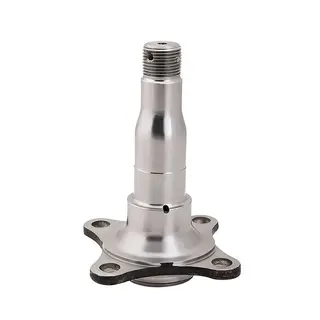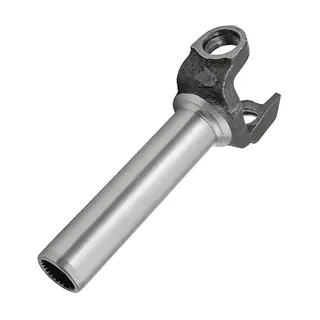In today's fiercely competitive automotive manufacturing field, every process strives for higher efficiency and lower costs. The emergence of precision forging technology has undoubtedly brought a revolution to the automotive industry. It not only significantly reduces manufacturing costs but also improves product quality and production efficiency. This article will deeply explore the advantages, applications, and future development trends of precision forging technology.
Precision forging is an advanced manufacturing process capable of producing near-net-shape forgings with high surface quality and dimensional accuracy, with little or no flash. Compared with traditional hot forging processes, precision forging shows significant improvements in accuracy and efficiency. Traditional hot forging processes have difficulty effectively producing near-net-shape forgings, whereas precision forging, by introducing results from plasticity theory, materials science, and tribology, has improved forging processes and developed a variety of precision forging technologies. The advantages of precision forging mainly include:
Practically, precision forging can significantly reduce the overall manufacturing costs of the supply chain, typically saving more than 15%. Although the forging cost may increase after adopting precision forging, the total cost is greatly reduced due to the decreased machining expenses. For example, using integral gear forging instead of machining the synchronous gear and body separately can save about 25% of production costs. This not only represents the future trend in automotive transmission gear processing but also brings tangible economic benefits to automotive manufacturers.
Another important feature of precision forging is that manufacturing costs gradually decrease as production volume increases. This mainly reflects the advantages of mold forming processes, which offer high efficiency and high consistency. Although fixed costs are high during production, production efficiency is also high. For large-batch parts, minimal additional investment can greatly increase production capacity.
Precision forging can produce high-precision forgings, with accuracy reaching IT8–11 (cold forging) and IT11–14 (warm forging), or even higher. This is crucial for the manufacturing of automotive components, as high-precision parts can improve the overall performance and reliability of vehicles.
Precision forging technology can be classified in various ways, generally based on forging temperature and forming method.
Cold Forging – Cold forging is a process where steel is formed at room temperature after pickling, phosphating, and saponification. The precision of the forged part can reach IT8–11. The advantages of cold forging are high accuracy and good surface quality, but it requires high material plasticity and large equipment tonnage.
Warm Forging – In the industry, warm forging refers to forging conducted above room temperature but below the final hot forging temperature (1000℃–1250℃). At this temperature, the thickness of the forging oxide scale is only 10μm, and precision reaches IT11–14. The advantage of warm forging is that it can be performed at lower temperatures, reducing material oxidation and burn loss while lowering equipment tonnage.
Warm (Hot) – Cold Composite Forging – In this process, the metal is first formed into a blank close to the final product shape using warm forging. After cleaning and lubrication, the blank is refined or shaped using cold forging, achieving cold forging level accuracy in the finished areas. This composite process combines the advantages of warm and cold forging, improving production efficiency while ensuring product accuracy.
Extrusion – Extrusion is a method where the material is pushed out from the die cavity under triaxial uneven compressive stress, reducing cross-sectional area and increasing length to form a forging. It is mainly used for cold extruded splines, warm extruded valve bodies, and hot extruded half-shaft sleeves.
Closed Die Forging – Closed die forging involves forming metal in a closed concave die using one or two punches, either unidirectionally or oppositely, to produce near-net-shape precision forgings with no flash. Closed die forging can achieve flashless forging, high material utilization, small equipment tonnage, and high dimensional accuracy.
Flow Split Forging – The principle of flow split forging is to establish a material diversion cavity or channel in the blank or forming part of the die. During forging, part of the material flows into the diversion cavity or channel while the cavity is being filled. The application of flow split forging technology allows high-precision gears with minimal or no machining to be quickly industrialized, mainly applied to cold forging of spur gears and helical gears.
Currently, automotive precision forgings are mainly concentrated in transmissions and rear axle assemblies. Additionally, in passenger car parts, drivetrain components and half shafts in rear-wheel drive vehicles are typical automotive precision forgings. Some specific application cases include:
Precision forging technology for bevel gears was applied early in production. Its development has progressed from two heating, two forging processes to one heating, two forging processes. Large-diameter gears with complex shapes can also be formed using hot forging with minimal steps. Currently, the cutting process has been largely replaced by precision forging for automotive differential bevel gears.
With increasing precision requirements, hot precision forged gears can no longer meet product accuracy needs. For example, planetary half-shaft gears in passenger vehicles have started to use cold forging processes such as closed die forging and cold rotary forging, achieving IT7 precision. However, cold forging applicability is limited, and domestically it is only possible to produce gears with diameters below φ90mm.
The structure of combined gears in transmissions is moving toward integration. Hot forging combined with cold finishing is applied to produce integral forgings of transmission synchronizer gears and the body. For the combined gear tooth profile, hot or warm precision forging is used, followed by cold finishing to ensure tooth accuracy. Cold finishing and crowning are performed on a hydraulic press.
Spur gears are key parts of transmissions, transfer cases, and drive axles. Precision forging of spur gears is difficult due to the lack of draft angle and challenges in forming the tooth tips, so this process is less widely applied. Forging methods include hot precision forging, cold precision forging, cold extrusion, hot forging–cold pushing, and warm forging–cold extrusion. Using the flow split principle, manual transmission reverse gear parts have been developed. Since reverse gears require some tooth taper, the tooth surface undergoes one additional cold forging step for taper forming.
The positive extrusion method is commonly used domestically to form thin and small gears. A typical example is the straight-tooth cylindrical gear of automotive starters, produced via cold extrusion. First, involute splined shafts are produced by cold extrusion, then small module spur gears are made using wire-cutting methods, achieving IT7.5 precision. Applications have expanded from peripheral components such as starters and window regulators to key assemblies like steering gears and transmissions.
Helical bevel gears have deep teeth and large helix angles, making precision forging challenging. In developed countries, high-precision helical bevel gears are widely used in the automotive industry. Currently, domestic production uses flashless closed die forging. The blank is heated with minimal oxidation, preformed by upsetting, punching, and expanding, then subjected to pre-forging and final forging, leaving minimal material on the tooth surface for precision milling.
As the automotive industry continues to develop, requirements for part precision and quality are increasing, driving continuous innovation in precision forging technology. Main development trends include:
By combining the advantages of hot and cold forging, trends include hot–cold or warm–cold composite forging processes, or direct warm precision forging of high-precision spur and bevel gears. These composite processes maximize the advantages of different forging methods, improving efficiency and product quality.
Precision forging demands extremely high die accuracy, making the development of high-precision dies a key technology. Advanced die manufacturing techniques and materials can improve die life and accuracy, ensuring the quality of precision forgings.
The ultimate goal of precision forging technology is the use of dedicated presses, especially fully automated ones. For example, using HATEBUR presses to produce flashless gear blanks can achieve production efficiency of 4,000–6,000 pieces per hour, with fast cycles, minimal oxidation, and machining allowances as low as 0.5mm. For warm forging, stricter temperature control requires multi-station warm forging presses to meet precision demands.
Under increasingly strict environmental regulations, precision forging is also moving toward green manufacturing. By optimizing forging processes, reducing material waste and energy consumption, and lowering pollution emissions during production, sustainable development can be achieved.
As an important innovation in automotive manufacturing, precision forging technology has significant advantages in cost, efficiency, and accuracy. It not only improves the quality and performance of automotive components but also reduces production costs, enhancing enterprise competitiveness. With continued technological development and expanded applications, precision forging will become the mainstream trend in automotive manufacturing. Traditional forging enterprises should seize this opportunity through technological innovation, talent cultivation, and market expansion, achieving transformation and upgrading toward high-quality development.



